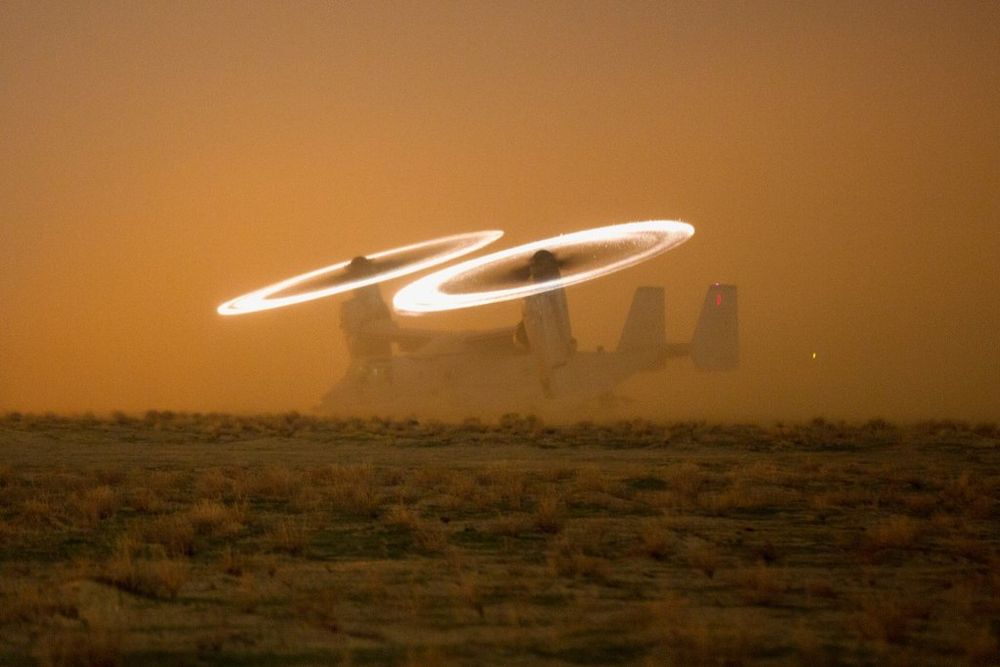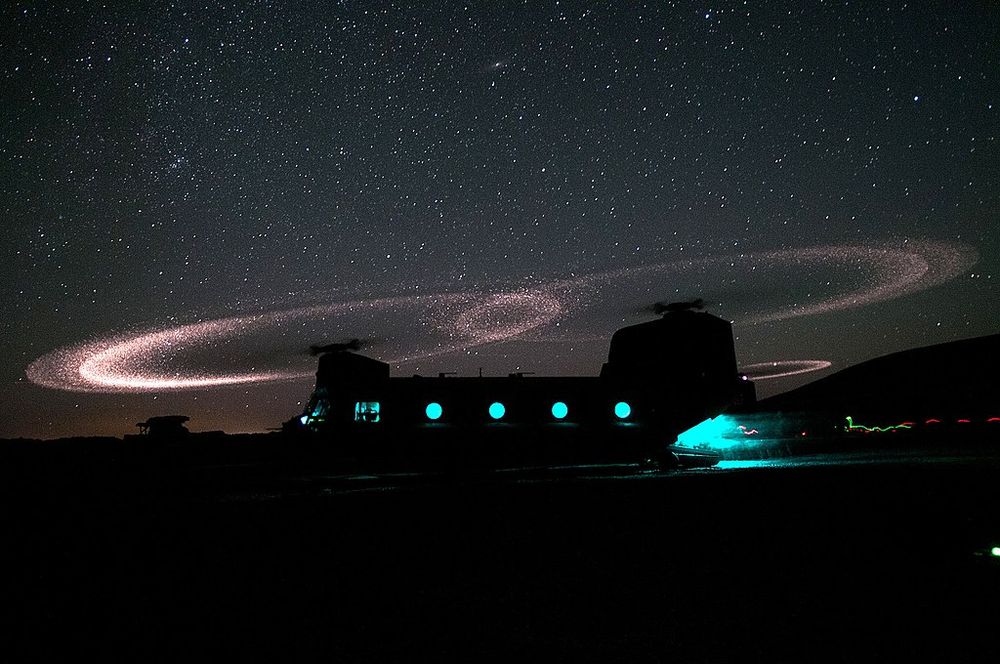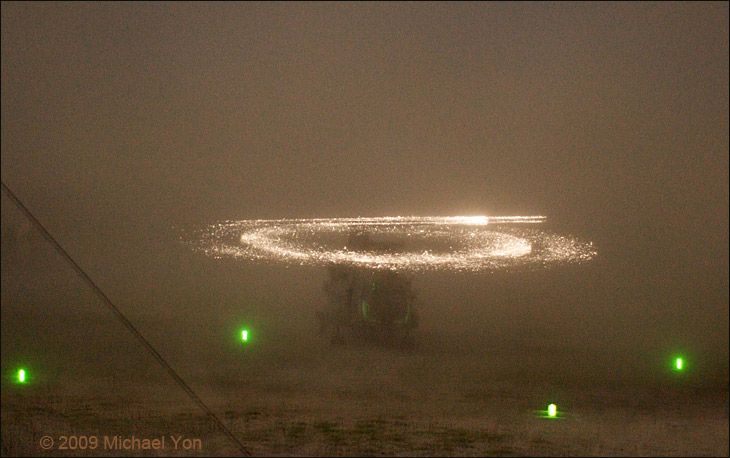When American war correspondent and photographer Michael Yon went accompanying US soldiers to Afghanistan in 2009, and began photographing the troops and their equipment there, he noticed an unusual phenomenon. Whenever a helicopter was taking off or descending and there was lots of sand in the air, the blades of the rotors began to glow like “distant galaxies”.
“The halos spark, glitter and veritably crackle, but in still photos the halos appear more like intricate orbital bands,” Michael Yon wrote in a blog post.
“The halos usually disappear as the rotors change pitch, dust diminishes and the ramp touches the ground,” he wrote.
Kopp–Etchells Effect seen on a U.S. Marine Corps MV-22 Osprey at an undisclosed location in Southwest Asia. Photo: Lance Cpl. Clarence Leake/Cpl. Akeel Austin/Wikimedia Commons
Yon asked the pilots but nobody seemed to have a clue. But they did have their own theories. Yon describes speaking to one pilot who said the halos were “a result of static electricity created by friction as materials of dissimilar material strike against each other.”
But this theory has a problem. A static discharge does not produce a shower of sparks as seen in these pictures. The real explanation is this:
When an helicopter is very near the ground the rotor blades kick up an enormous amount of dust and sand into the air. To protect the rotor blades from abrasion from this dust and other hazardous particulate matter in the air, the leading edges of the blades are fitted with strips of tough materials like titanium, or nickel alloys. These materials work great under normal battlefield condition, but the desert is a harsh environment. Sand is harder than titanium and nickel that make up the abrasion strip. So when the blades cut through a cloud of sand, the sand particles hit the blades, and gouge out tiny grooves on the blades’ surface. This sends bits of metals flying into the air. This fine metallic dust spontaneously ignite when it comes into contact with atmospheric oxygen, a phenomenon known as pyrophoricity. It is the same phenomenon that cause sparks to fly out when you are sharpening a knife against a grinding wheel, or hit two stones (or pieces of metals) with each other. Not all metals exhibit pyrophoricity, but some do, such as iron, aluminium, magnesium, calcium, uranium, titanium, tungsten, bismuth, hafnium, thorium, osmium, neodymium, lithium, sodium, potassium, rubidium, caesium and a handful of others.
Dust lights up the rotors of a CH-47 Chinook helicopter in Ghazni Province, Afghanistan. Photo: Sgt. Michael J. MacLeod/Wikimedia Commons
When Michael Yon discovered the phenomenon, he was surprised that it didn’t have a name yet. “How can the helicopter halos, so majestic and indeed dangerous at times, be devoid of a fitting name?”, he asked.
He decided to name it the Kopp-Etchells Effect, in memory of two soldiers who killed in combat in Sangin, Afghanistan in July of 2009—Benjamin Kopp, a US Army Ranger, and Joseph Etchells, a British soldier.
“It’s not hard to imagine the two Corporals have already linked up and regrouped, and in sense they have. Knowing combat soldiers, it’s easy to imagine them laughing away at the idea,” Yon said.
Photo: Michael Yon
Photo: Michael Yon
Photo: Michael Yon
Photo: Michael Yon


















Comments
Post a Comment